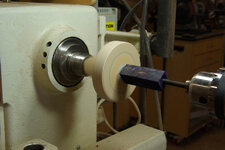avbill
Member
There are two different articles about sharing the pen blanks in the library:
One makes a home made jig. the other buys a squaring jig from PSI and adapts it to the Sanding square.
For any person who has made either can you please
1; comment on how your jig works now
2; why you select the jig you did.
3; Did you make any improvements to the two articles.
Thanks
One makes a home made jig. the other buys a squaring jig from PSI and adapts it to the Sanding square.
For any person who has made either can you please
1; comment on how your jig works now
2; why you select the jig you did.
3; Did you make any improvements to the two articles.
Thanks

